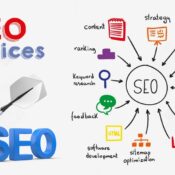Vacation rental website design

Vacation rental website design
In today’s competitive vacation rental market, a website is more than just an online presence; it’s a critical tool for attracting, engaging, and converting potential guests. A well-designed vacation rental website not only helps travelers find and book properties easily, but it also serves as a branding tool that reflects your unique offerings and creates an emotional connection with your audience.
In this blog, we’ll explore essential design elements that Create Personal Website incorporates to ensure your vacation rental website stands out and provides a seamless experience for both hosts and guests.
1. User-Friendly Interface and Navigation
When it comes to designing a vacation rental website, simplicity is key. Users often come to these sites with one goal: to find and book the perfect property. A cluttered or overly complicated interface can quickly turn potential guests away. Here are some best practices to follow:
-
Clear and Concise Navigation: Organize your navigation menu into clear categories such as “Home,” “Browse Properties,” “About Us,” “Contact,” and “FAQs.” Include a prominent search bar at the top so users can immediately start searching for properties based on location, date, and number of guests.
-
Property Filters: Allow users to filter properties based on criteria like price, amenities, type of property, and more. This not only helps guests find what they’re looking for quickly, but it also improves the overall user experience.
-
Quick Access to Key Information: Whether it’s rental prices, policies, or availability, make sure key information is easy to find. Avoid burying important details in long paragraphs or multiple pages.
2. Attractive and High-Quality Visuals
A picture is worth a thousand words, especially when it comes to vacation rentals. Stunning, high-quality images of your properties are essential to convincing potential guests that your listing is worth booking. Here’s how to make your visuals stand out:
-
Professional Photography: Invest in professional photography that highlights the best features of your property. Show off the interior, exterior, and surrounding area to help guests visualize themselves at your rental.
-
Virtual Tours: Providing a virtual tour can offer a more immersive experience, allowing potential guests to explore the property before they even arrive. This is especially effective for larger homes or unique properties like cabins or villas.
-
Image Galleries: A clean, organized image gallery allows users to scroll through multiple photos without distractions. Incorporating high-quality visuals can also help boost your website’s SEO, as Google loves content that engages visitors.
3. Clear Call-to-Actions (CTAs)
A vacation rental website should lead the user to take action — whether that’s booking a property, signing up for a newsletter, or contacting the owner for more information. Here are some CTA tips:
-
Prominent “Book Now” Buttons: Place clear and attractive “Book Now” buttons on every property listing page. These should stand out but not overwhelm the content. The button should take users directly to the booking page or calendar.
-
Lead Capture Forms: For users not ready to book but interested in your property, include lead capture forms. Offer special deals or updates on availability in exchange for their email address.
-
Encourage Social Proof: Add “Review” or “Testimonial” buttons on your homepage and property pages. Positive guest reviews can build trust and help convert more visitors into customers.
4. Mobile Optimization
With a growing number of travelers using mobile devices to plan their trips, mobile optimization is no longer optional—it’s essential. A vacation rental website must be responsive and function flawlessly on smartphones and tablets. Here’s how to optimize your site for mobile users:
-
Responsive Design: Ensure your website design adapts to different screen sizes, adjusting text, images, and menus so that everything remains readable and accessible on any device.
-
Fast Load Time: Speed is critical. A website that loads slowly on mobile devices can result in high bounce rates. Optimize images, minimize the use of unnecessary scripts, and streamline your website to keep it fast.
-
Mobile-Friendly Booking Process: Make sure the booking process is as smooth on mobile as it is on desktop. Use large buttons, easy-to-fill-out forms, and a simple checkout experience.
5. Search Engine Optimization (SEO)
An attractive vacation rental website is of little use if potential guests can’t find it. This is where SEO comes into play. Ensure your website is optimized for search engines by following these tips:
-
Use Relevant Keywords: Research keywords that potential guests are likely to search for, such as “vacation rental in [location],” “beach house rentals,” or “luxury villas in [destination].” Use these keywords in your titles, meta descriptions, and throughout your website content.
-
Local SEO: If your rental property is in a specific location, make sure to target local search terms. For example, “New York vacation rental near Central Park” will attract guests looking for rentals in that area.
-
Optimize for Google My Business: Set up a Google My Business profile for your vacation rental. This helps your property show up on Google Maps and in local searches, which is particularly important for travelers looking for last-minute bookings.
6. Booking and Payment Integration
A seamless booking process is critical to turning website visitors into paying guests. Make sure your booking system is user-friendly and integrated with a secure payment gateway:
-
Real-Time Availability: Include a calendar that shows real-time availability of your property so guests can instantly see if their desired dates are available.
-
Multiple Payment Options: Offer various payment methods, including credit/debit cards, PayPal, or other local payment methods. This allows guests from different countries or regions to book without hassle.
-
Clear Cancellation and Refund Policy: Make sure your policies are easy to find and clearly state what’s included in the price, cancellation terms, and any other important details. Trust is essential in the booking process.
7. Personalization and Branding
A strong, consistent brand is what will make your vacation rental stand out in a sea of competitors. Here’s how to personalize your website:
-
Custom Design Elements: Choose colors, fonts, and logos that reflect the personality and style of your rental. Whether it’s a cozy cabin in the woods or a luxury beachfront property, your design should echo the experience guests can expect.
-
About Us Section: Use the “About Us” section to tell your story. Guests often want to know more about the person or company they are renting from. Personalizing this section helps build trust.
-
Guest Experience Features: Highlight guest experience features like a local guide, suggestions for nearby activities, or personalized services like airport transfers or private chefs.






